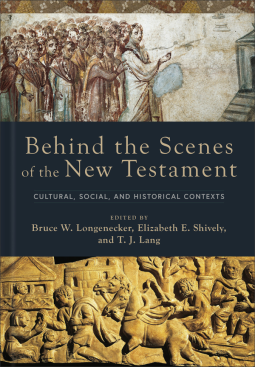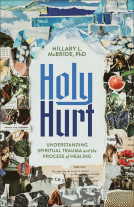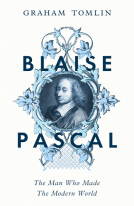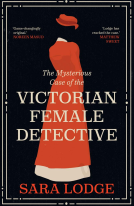
Behind the Scenes of the New Testament
Cultural, Social, and Historical Contexts
by Bruce W. Longenecker, Elizabeth E. Shively, and T. J. Lang, eds.
This title was previously available on NetGalley and is now archived.
Send NetGalley books directly to your Kindle or Kindle app
1
To read on a Kindle or Kindle app, please add kindle@netgalley.com as an approved email address to receive files in your Amazon account. Click here for step-by-step instructions.
2
Also find your Kindle email address within your Amazon account, and enter it here.
Pub Date 5 Nov 2024 | Archive Date 31 Dec 2024
Baker Academic & Brazos Press | Baker Academic
Talking about this book? Use #BehindtheScenesoftheNewTestament #NetGalley. More hashtag tips!
Description
This authoritative volume brings together a team of world-class scholars to cover the full range of New Testament backgrounds in a concise, up-to-date, and comprehensive manner.
Drawing on the expertise of specialists in the areas of archaeological, historical, and biblical studies, this book provides concise treatments of a wide breadth of topics related to the world of the early Christ followers. The book offers compact overviews of key historical issues, facilitating enriched understandings of the significance and force of the texts of the New Testament in their original contexts.
Meant to be used alongside traditional surveys, this one-stop introduction to New Testament backgrounds fills a gap in typical introduction to the Bible courses and is ideal for undergraduate or seminary classes. It is beautifully designed and includes photographs, line drawings, maps, charts, and tables, which will facilitate its use in the classroom.
Advance Praise
“It is difficult to imagine a more helpful guide to the world of the New Testament than this collection of accessible essays by world-class experts. Whether used as a main text, a supplemental text, a reference book, or a resource for research, this volume should be in the hands of everyone who studies the New Testament, from serious beginners to scholars.”—Michael J. Gorman, Raymond E. Brown Professor of Biblical Studies and Theology, St. Mary’s Seminary & University
“Readers of the New Testament often bring an earnest piety to the act of interpretation, but without respect for the moment in which God chose to issue that communication, piety alone can lead one astray. This volume protects against that kind of misinterpretation. Comprehensive in the subjects covered, Behind the Scenes of the New Testament features deeply respected and exciting scholars who equip biblical interpreters with the cultural wisdom to read well. The chapters and bibliographies are succinct and rich, ensuring that they will be read and will propel readers to go deeper. This book will inspire the joy of discovering the world of the New Testament, transforming naive piety into incarnational faith.”—Amy Peeler, Kenneth T. Wessner Chair of Biblical Studies, Wheaton College
“Behind the Scenes of the New Testament is a must-have resource for students, pastors, scholars, and teachers wanting to study the New Testament texts in light of their ancient contexts. Each of the well-researched, accessible essays illuminates historical and cultural dimensions of the New Testament world. Readers will gain insight on how to connect these dimensions to their interpretation of the New Testament. They will also come to appreciate how historically informed readings of the Bible can lead to more faithful readings.”—Janette H. Ok, Fuller Theological Seminary
“Behind the Scenes of the New Testament is a masterful collection of pertinent, interesting essays that illuminate the Greco-Roman world and the New Testament texts’ engagement with it. Richly detailed and brilliantly written, each essay provides the latest research on its topic. Scholars and students alike will discover insightful gems in the vast array of subjects covered. This volume should be used by every New Testament introduction course.”—Lynn H. Cohick, Distinguished Professor of New Testament, Houston Christian University
“Students of early Christianity require a strong familiarity with the wealth of historical, philosophical, social, and political material that informed the writers of the New Testament. To that end, Behind the Scenes of the New Testament comprehensively covers a breadth of material drawn from the cultural encyclopedia of the era. The editors and the contributors they have gathered for this impressive project are deserving of praise. Going forward, I will definitely use this volume with my students!”—Christopher W. Skinner, professor of New Testament and early Christianity, Loyola University Chicago
“In this comprehensive compendium, the editors of Behind the Scenes of the New Testament have gathered an impressive array of scholars with expertise in the historical and cultural milieu of the New Testament. By situating the New Testament’s key settings, actors, themes, and ‘scripts’ within their original contexts, each essay illustrates the importance of historical study for the task of interpretation. Scholarly yet accessible, this volume will prove to be an invaluable resource for students and academics alike for many years to come.”—Brittany E. Wilson, associate professor of New Testament, Duke Divinity School
Available Editions
| EDITION | Other Format |
| ISBN | 9781540964472 |
| PRICE | US$54.99 (USD) |
| PAGES | 544 |
Available on NetGalley
Featured Reviews
Discover the intricate world surrounding the New Testament like never before! This remarkable volume, Behind the Scenes of the New Testament, offers an unprecedented deep dive into the cultural, social, and historical tapestry that shaped the earliest Christian writings. For any serious student of biblical studies or anyone eager to enrich their understanding of scripture, this book is indispensable. Every page unveils nuanced perspectives that can transform familiar texts, grounding theological insights in the rich landscapes, customs, and philosophies of the first century. This comprehensive guide doesn’t just narrate historical details; it actively brings the New Testament world to life, allowing readers to see these canonical writings through the eyes of those who first encountered them. A must-read for biblical scholars, teachers, and lay readers alike, Behind the Scenes of the New Testament is an essential resource for anyone dedicated to a more authentic and profound understanding of the New Testament.
This is a phenomenal reference and a worthy addition to your reference shelf of New Testament Background studies. This volume is a scholarly work and readers must be aware of that going into it. Anyone can read and gain valuable insight but it is written in an academic style. The author’s stated goal is to bring together “a team of world-class scholars to cover the full range of New Testament backgrounds studies in a concise, up-to-date, and comprehensive manner. Drawing on the expertise of specialists in the areas of archaeological, historical, and biblical studies, this book provides concise treatments of a wide breadth of topics. The author achieves his objective in a series of sixty-two scholarly essays.
#BehindtheScenesoftheNewTestament #NetGalley.
At more than 500 pages, and more than 60 chapters, this is a veritable feast of contextual information about the first century New Testament world.
Among the interesting bits of information we learn, for example, that Mark’s Jesus never enters cities, whereas Luke’s Jesus does (Chp.7). That isn’t necessarily a disagreement between the gospel writers, but it is a stark indication of how the gospel writers had very different interests and foci.
In some places the chapters were arguably a little too informative. In Chapter 4 for example, the philosophical background to the New Testament is explained with references to Neoplatonists like Plotinus, and to Marcus Aurelius. However, both of those philosophers lived centuries after the New Testament. Are they really relevant? This chapter read a little like a generic encyclopedia entry on ‘Ancient Philosophy’, rather than one crafted for a book about the background to the New Testament.
However, other chapters were much better focused. Chapter 44 on Sacrifice was particularly well written, with a sharp focus on the specifically New Testament issues. It was good to see that it took care to avoid potentially irrelevant references to the wider sacrificial cults which were contemporaneous.
While I enjoyed the information which the book provided, I was a little disappointed by some of the issues which it didn’t cover. For example, several of the chapters (such as chapter 13) noted that there were multiple versions of Hebrew scriptural texts available in the New Testament era. Ancient Christians (and for that matter, the Qumran community) seem to have been happy to read and cite differing versions of scripture alongside each other. That seems to be a markedly different attitude than we find in modern scholars who worry about establishing the precise textual authenticity of each piece of Scripture. Was there a different mindset in relation to Scripture in the New Testament era? Questions like that are important, and may have significant implications for modern Christians.
Another issue is pseudepigraphia (ie documents which are not written by the people they claim to be written by). This was mentioned in passing in a few chapters. But I was surprised that there wasn’t a more substantial discussion of the issue. Some modern scholars are prepared to dismiss half the Pauline epistles as not authentic (ie as written by other people ‘pretending’ to be Paul). Many scholars treat the Petrine epistles similarly, yet they claim to be eye witness testimony and they have been cited down the centuries as evidence for scriptural claims. Are they ‘fake’ documents making ‘dishonest’ claims? These kinds of questions raise serious issues for some modern Christians, so I would have welcomed a chapter exploring them.
Overall, this is definitely an informative book, and I enjoyed reading some of the articles. I particularly appreciated the stylistic approach of short articles which can be dipped into and read in any order. That makes this a potentially useful reference resource for preachers, teachers and anyone wanting to expand their knowledge of the wider New Testament world.
(These are honest comments on a (pre-publication) version of the text, which was kindly provided free by the publisher, for the purpose of writing a review).
 Deborah W, Reviewer
Deborah W, Reviewer
This book is a collection of 62 academic essays on the ancient world leading up to, including, and after the New Testament period. One of the assumptions of this collection is that the NT was largely (or perhaps totally) written after the fall of Jerusalem in 70 A.D., so these essays covered a much broader period than I expected. Some essay authors stated that we don't know who really wrote the NT books and that prophecies were written by people who knew what happened but were pretending Jesus predicted them ahead of time. The Bible was treated as just another ancient document, not divinely inspired.
The essay authors usually tried to fit the NT writings into the surrounding ancient culture. As in, after talking about how a Roman or Greek would have written a letter, the author pointed out that NT letters had certain elements of a proper letter but were lacking others (like Paul was trying and failed to meet this formula). Another essay talked about Roman ideals of masculinity and how the NT writers tried to portray Jesus as a hypermasculine Roman ideal even though Jesus didn't seem to fit that ideal. I felt like the scholars were trying too hard to fit the NT into Roman culture rather than acknowledging how Jewish culture was unique, and maybe the Jews didn't want to fit in completely with Roman ideals and culture.
Since the NT wasn't divinely-inspired truth about God, one essay tried to figure out why people from other cultures might add Jesus to the gods they worshipped or even give up their other gods. What social benefit might they have received? Most of the essays hardly referenced the actual NT but were on topics relating to that general time period. For example, one essay simply gave an overview of Greek and Roman schools of thought. The essays weren't intended to help a student of the Bible better understand the NT in its Jewish context but usually gave an overview of various topics, mostly focused on Roman culture. The essays were very academic in writing style, with references to their sources cited in the text and a list of sources at the end of each essay. While I learned more about Roman culture than I'd previously known, I didn't feel like I'd gained any true insights into the NT.













